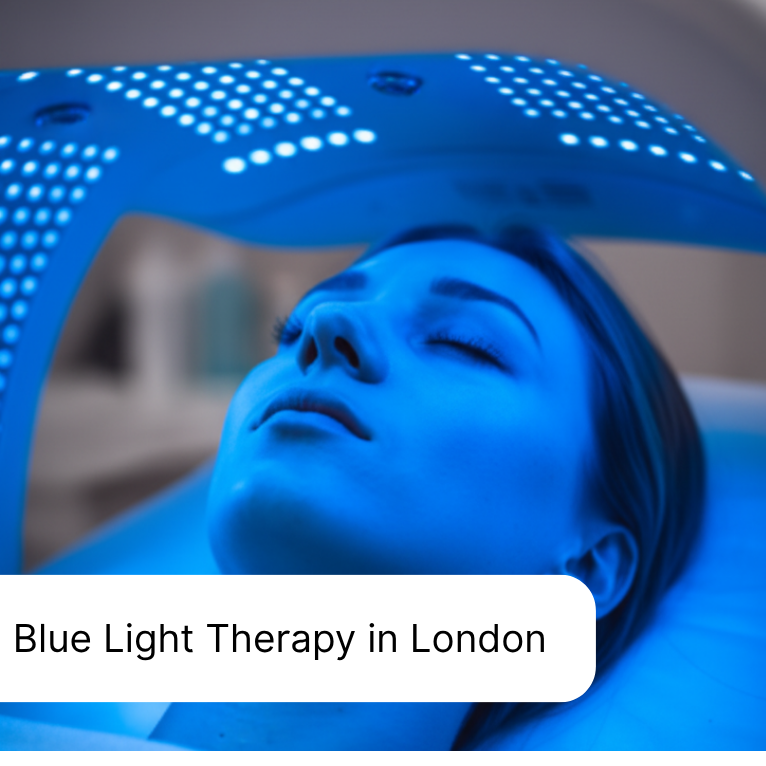Transform Acne with Blue Light Therapy in London

Acne can affect anyone, regardless of age or skin type. For many, it’s not just a cosmetic concern—it can impact confidence and self-esteem. In recent years, blue light therapy has become a popular non-invasive treatment that promises clearer, calmer skin without harsh chemicals or downtime. Whether done at home or in a professional setting, this technology is helping people across the UK regain control over their skin’s health and appearance.
How Blue Light Therapy Works
Blue light therapy uses specific wavelengths of light to target acne-causing bacteria deep within the pores. Unlike topical treatments that only work on the surface, this therapy penetrates the skin to address the root cause of breakouts.
The Science of Bacteria Elimination
The main target of blue light therapy is Propionibacterium acnes—the bacteria responsible for inflammation and clogged pores. When exposed to blue light, these bacteria produce molecules that react with oxygen, leading to their destruction. This process helps reduce active acne and prevent future flare-ups, leaving the skin clearer and calmer over time.
Wavelengths Typically Used for Acne
The most effective blue light wavelengths for acne treatment typically range between 405 and 470 nanometres (nm). Devices designed for skin therapy in the UK often fall within this range to ensure both efficacy and safety. These wavelengths are strong enough to combat bacteria but gentle enough to avoid harming surrounding skin tissues.
Benefits for Acne-Prone and Oily Skin
Blue light therapy offers several benefits beyond just treating acne. It helps regulate oil production, reducing that persistent shine many people with oily skin struggle with. The therapy also calms redness and irritation, promoting a more even skin tone.
Regular sessions can make the skin appear smoother, less congested, and visibly healthier. Over time, users often notice fewer breakouts and reduced pore size. For individuals who have struggled with acne for years, blue light therapy can be a refreshing, effective alternative to traditional treatments that may cause dryness or sensitivity.
At-Home vs Professional Blue Light Treatments
Blue light therapy is now more accessible than ever, thanks to a wide range of at-home devices available across the UK. These portable tools are easy to use and can deliver noticeable results when used consistently.
However, professional treatments offered in dermatology clinics or wellness centres use more powerful devices that penetrate deeper into the skin. These sessions are usually guided by skincare professionals who can tailor the intensity and duration to your skin’s unique needs.
For mild to moderate acne, at-home therapy may be sufficient. For severe or cystic acne, professional treatments typically yield faster, more significant improvements.
How to Combine Blue and Red Light for Better Results
While blue light targets bacteria, red light therapy complements it by reducing inflammation and stimulating skin repair. When used together, they form a powerful duo—blue light clears the acne, and red light soothes and heals the skin.
Combining both can also help fade acne scars, enhance collagen production, and improve overall skin texture. Many modern devices now offer dual-light options, making it simple to integrate both therapies into your skincare routine.
Safety and Side Effects
Blue light therapy is generally considered safe and gentle when used as directed. It does not involve UV rays, so there’s no risk of tanning or DNA damage.
Some users may experience mild redness or temporary dryness immediately after treatment, but these effects typically subside within a few hours. Applying a hydrating, non-comedogenic moisturizer after sessions helps soothe the skin and maintain its balance.
Who Should Avoid Blue Light Therapy
Although blue light therapy suits most skin types, it may not be ideal for everyone. Individuals who are photosensitive, taking medication that increases light sensitivity, or have certain skin conditions like lupus should consult a dermatologist before starting treatment.
Pregnant or breastfeeding women should also seek medical advice to ensure safety.
FAQs
How often should I use blue light therapy?
For best results, most experts recommend 3–5 sessions per week for the first month, followed by maintenance treatments as needed.
When will I see visible results?
Many users notice clearer skin within 2–4 weeks of consistent use. However, results vary depending on acne severity and skin type.
Can blue light therapy replace my skincare routine?
No. It should be part of a balanced skincare routine that includes cleansing, moisturising, and sun protection.
A Brighter Path to Clear, Confident Skin
Blue light therapy represents a breakthrough in modern skincare—an elegant blend of science and simplicity. For countless women across the UK, it offers hope beyond creams, antibiotics, or harsh treatments that often come with unwanted side effects. By harnessing targeted light wavelengths, this therapy helps the skin heal naturally, fighting acne from the inside out.
What makes blue light therapy truly remarkable is its gentleness and consistency. It doesn’t demand major lifestyle changes, nor does it strip the skin of its natural balance. Instead, it works quietly beneath the surface—reducing bacteria, calming inflammation, and restoring clarity over time. Whether used in a clinic with professional guidance or in the comfort of your home, it can become a soothing ritual that transforms not only your skin but also how you feel about yourself.
